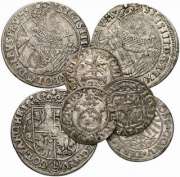|
Biografie Paul Strassburg
Secret Counsellor of the King of Sweden, Gustav the 2nd Adolf
Paul Strassburg (1595 – 1654) was born at Nurnberg in 1595, two years after his father, a jurist, settled in the town arriving from Saxony. He acquired an academic degree at Altdorf. For three years he studied Italian and Latin in Italy. While in Prague he joined the protestant uprising in Bohemia, since he was a Calvinist, and he fought at The Battle of White Mountain (1) thus becoming a captain. In 1624 he makes a first trip to Transylvania as diplomatic agent / secret agent trying to persuade the prince of Transylvania Gabriel Bethlen (2) to become a member of the Hague Alliance of the Protestant countries: England, Holland, Denmark and thus to fight against the Habsburg Empire. The prince asked for too much money and nothing was settled. Four years later Paul Strassburg is commissioned with a new mission to Transylvania, on behalf of King Gustav Adolf of Sweden, who was now brother-in-law with the prince of Transylvania, as Gabriel Bethlen married to Catherina of Brandenburg. In 1628 Paul Strassburg becomes a princely adviser of the Swedish Court and a diplomat and is sent to ask for the assistance of Transylvania against Poland. He spends a year at the Transylvanian Court without any favorable results. He returns to Sweden in January 1630, shortly before the prince Gabriel Bethlen passed away. A new prince is elected in Transylvania, György Rákóczi (3), and thus Paul Strassburg is commissioned with a third mission, having in mind, among other things, to convince the prince to collaborate with Sweden in Germany. On January and February 1632 he is once again in Transylvania where is instructed with a mission to the Ottoman Empire. Now he has to convince both the Turks and the Romanians to fight against the Austrian Emperor.
Paul Strassburg passed through Wallachia (4) in the spring of 1632, age 36. During his passing he placed at the prince `s disposal a painter of the mission` s retinue. The voivode Leon Tomșa thanks him for this in a letter from March, 12th, 1632. From April to July Paul Strassburg is in Constantinople. He is shown a high esteem but he does not succeed to lure the Turks into battle for they were hold back in a war with the Persians. The next years his secret diplomatic missions take him to Venice then Switzerland trying to convince the “Graubunden” to join their forces with the Swedes against the Austrians. While in Frankfurt he writes the account about his first state visit to Constantinople, where is included also the section referring to his passing through Wallachia.
His next missions take him to France, Denmark and Holland where he settles down for good as he gets married to the daughter of the Swedish Minister to Hague. He passes away in 1654, age 59. The archive of Strassburg for the years 1626-1646 is preserved at Uppsala University. Part of his correspondence was published in 1701 by Mieg at Frankfurt am Main, including his journal that has the title Pauli Strassburgi, Sueciae Regis quondam consiliarii secretioris aulici et ad Amurathem IV Legati, relation de Byzantino Itinere ac negotiis in Ottomannica aula peractis, nec non de statu ac facie Orientalis Imperii, uails erat circa Ann. MDCXXXIII. A Romanian scholar from Transylvania, Timotei Cipariu, copied the section referring to Wallachia and published it in Blaj, in 1867, annexing a Romanian translation to the Latin text.
Strassburg` s account comprises details concerning the fruitfulness, the revenue and the armed forces of Wallachia, some of them reproduced according to the direct information of the prince Leon Tomșa. At the same time he depicts his reception at the princely court in Bucharest.
Footnotes:
(1) Bila hora in Czech, on 8 November 1620.
(2) Hungarian Bethlen Gabor, prince of Transylvania (1613-1629).
(3) Hungarian György Rákóczi, prince of Transylvania (1630-1648).
(4) Romanian: Țara Românească or Valahia, archaic: Țeara Rumânească, It is situated north of the Danube and south of the Southern Carpathians. Wallachia is sometimes referred to as Muntenia (Greater Wallachia), through identification with the larger of its two traditional sections; the smaller being Oltenia (Lesser Wallachia). Wallachia was founded as a principality in the early 14th century by Basarab I, after a rebellion against Charles I of Hungary. In 1415, Wallachia accepted the suzerainty of the Ottoman Empire; this lasted until the 19th century, albeit with brief periods of Russian occupation between 1768 and 1854. In 1859, Wallachia united with Moldavia (the other Danubian Principality), to form the state of Romania.
|




